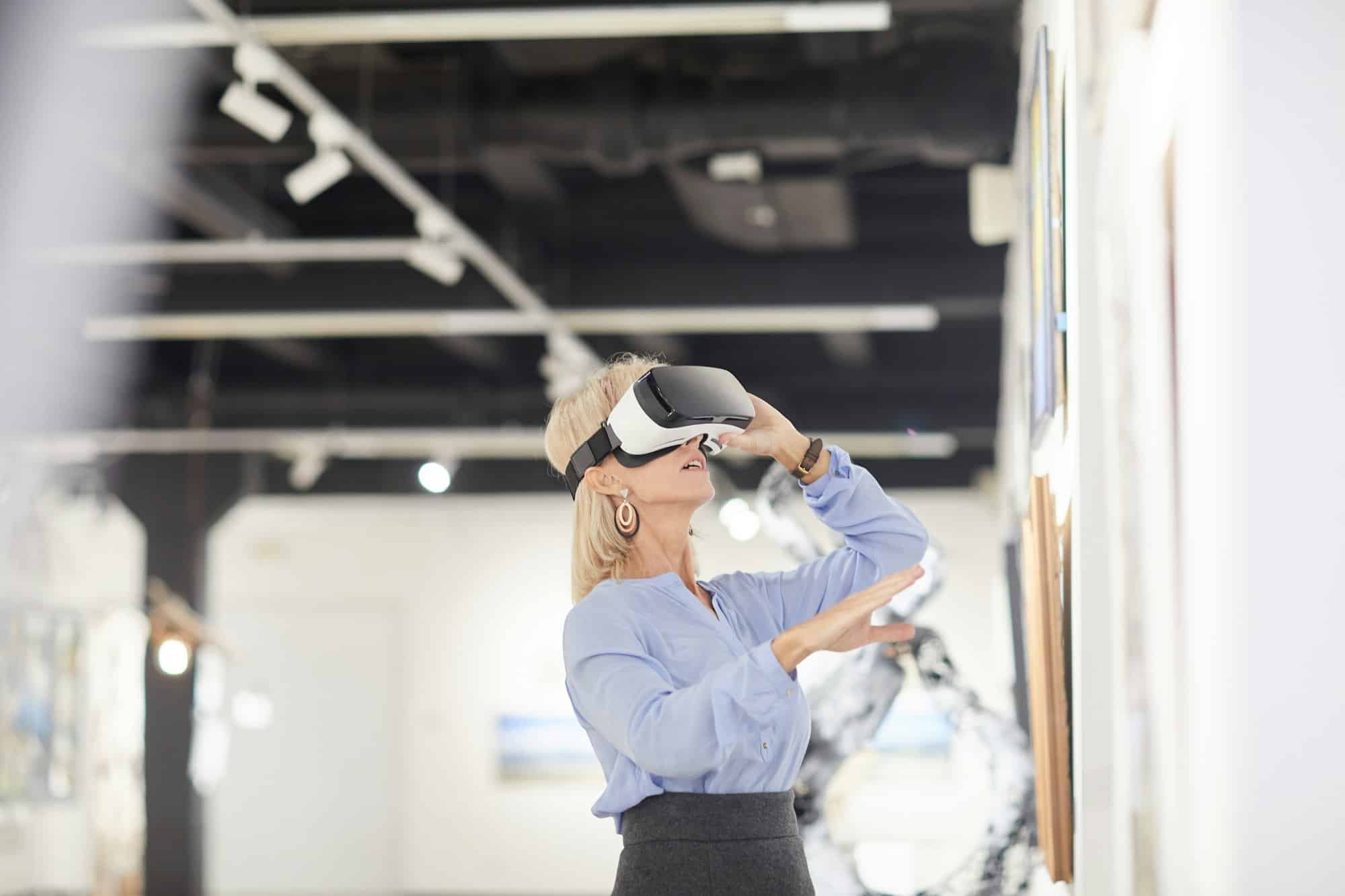In the ever-evolving digital age, art galleries and museums are not left behind. The rise of immersive technology, such as virtual reality (VR), presents a unique opportunity for them to reinvent the traditional space, turning static exhibits into interactive experiences. As we delve into the heart of the matter, we’ll explore how UK art galleries can utilise VR technology to curate interactive exhibits, thereby transforming the visitor’s experience into an engaging journey.
Bridging the Gap: Virtual Reality and Art Galleries
Art has always served as a reflection of society, capturing the zeitgeist of the era it represents. Traditionally, art galleries have been physical spaces where people can view and appreciate these creative expressions. However, in the face of the onslaught of the digital age, art galleries are now compelled to integrate advanced technology into their design and presentation.
Lire également : How to Optimize Your UK E-commerce Site for International Sales?
Virtual reality technology has emerged as an instrumental tool in transforming the art gallery experience. It provides spectators with an immersive environment that goes beyond the conventional two-dimensional view of an artwork. With VR, visitors are transported into a three-dimensional space, allowing them to explore and interact with the art piece from multiple perspectives.
Transforming the Viewing Experience
The use of virtual reality can transform the viewer’s experience in art galleries. Instead of merely observing an art piece, visitors can now interact with the exhibits, ultimately making their visit not just a viewing experience, but an engaging journey.
A découvrir également : Multilingual translation agency - translation and interpreting: effective solutions for your language needs
An example of this is the British Museum’s collaboration with Google’s Cultural Institute. Using high-resolution images and VR technology, they created an online exhibition presenting the museum’s collection in a virtual space. The viewer is not only able to see the collection in high definition, but they can also move around the virtual gallery, observing the exhibits as if they were physically present.
The integration of VR technology in art galleries also offers enhanced accessibility. For those who are unable to visit the museum in person, perhaps due to geographical restrictions or mobility issues, a virtual tour can provide a similar experience.
Beyond the Walls: Expanding the Space of Art
Beyond transforming the traditional viewing experience, the use of virtual reality can also provide art galleries with the ability to expand the space of art. With VR, the physical constraints of an exhibition space no longer apply. Virtual reality allows for vast, immersive spaces that can be modified and adapted at will.
For instance, art pieces that may be too large or complex to display in a physical space can be presented in a virtual setting. Additionally, the VR space can be designed to change and evolve according to the viewer’s interaction, providing an ever-changing, dynamic experience.
The Role of Augmented Reality in Art Galleries
While virtual reality creates a completely digital environment, its sister technology, augmented reality (AR), blends the physical and digital worlds together. This hybrid space allows for real-time interaction of the digital and physical elements.
In an art gallery context, AR can be used to provide additional information or context to the exhibited artwork. For example, an AR app could overlay historical data, artist’s commentary, or interactive 3D models on the physical artwork as viewed through a smartphone or AR glasses.
This technology offers the possibility to enrich the visit, making it more informative and engaging. In this way, AR not only enhances the visitor’s experience but also opens up new learning opportunities.
The Future of Art Galleries in the Digital Age
The integration of VR and AR technologies into art galleries is not merely a passing trend, but an indication of the future trajectory of the art world. As art continues to evolve, the use of these technologies will become increasingly important in the design of exhibitions and the overall visitor experience.
The growth of the digital age has the potential to democratise access to art, allowing more people to engage with and understand the importance of artistic expression. By embracing these technologies, UK art galleries can set a standard for the future of art viewership, making art more accessible, interactive, and engaging.
In this brave new world, the fusion of art and technology promises to usher in a new era for art galleries, opening up infinite possibilities for immersive and interactive art experiences. The potential for VR and AR in these spaces is vast. The art world is only scratching the surface of what is possible, and it is an exciting time to witness and be part of this transformation.
Art galleries around the world are embracing these digital tools, and it is only a matter of time before they become an integral part of our cultural fabric. The future of art lies in the interactive, immersive experiences offered by virtual and augmented reality technologies. The question then is not if, but how quickly, our art galleries will adapt and shape this digital landscape.
Embracing VR’s Potential: Virtual Museums and Exhibitions
The idea of a virtual museum isn’t new, but the sophistication and accessibility of VR technology has significantly enhanced its potential. By transitioning from a physical to a virtual space, institutions like the British Museum or the National Gallery can open up their collections to a global audience.
One of the best examples of this is the partnership between the British Museum and Google Arts and Culture. Through this collaboration, valuable artefacts, artworks and exhibitions were digitally archived, creating an extensive virtual representation of the museum. This online exhibition is not a mere digital catalogue, but a virtual environment that allows viewers to explore, interact and engage with the collection in a way that mimics a physical visit.
The use of VR technology also offers solutions to some of the limitations of physical exhibitions. For instance, during Design Week, the Natural History Museum used VR to showcase a dinosaur exhibition that would have been too large and logistically challenging to present physically. The VR exhibition allowed visitors to walk among life-sized dinosaurs, offering a uniquely immersive experience that would have been impossible to recreate in a physical space.
Moreover, virtual museums can act as powerful educational tools. They offer museum professionals a new platform on which to communicate information, engaging viewers in a more interactive and memorable way. However, the biggest advantage of virtual museums is their accessibility. With a virtual museum, geographical location, physical ability, or time constraints no longer limit a viewer’s access to art and culture.
Conclusion: The Future of Art Galleries and Museums in the Digital Age
As we have seen, VR and AR technologies have the potential to transform the art gallery and museum experience. They offer new ways of interacting with and understanding art, bringing a fresh perspective to the traditional, passive method of viewing exhibits. By transporting viewers into a virtual reality landscape, these technologies enable people to explore art in a more immersive and engaging way.
Art galleries and museums play an important role in our society, acting as custodians of culture, history, and artistic expression. By embracing VR and AR technologies, these institutions can ensure they continue to fulfil this role in the digital age.
The trend in museums and galleries towards digital exhibitions is not just a passing fad, but an evolution of the art world itself. From the British Museum’s collaboration with Google Arts, to the Natural History Museum’s VR dinosaur exhibition during Design Week, we are seeing more and more institutions embrace the possibilities offered by these technologies.
It’s an exciting time to be part of this transformation. The fusion of art and technology is leading to a democratisation of access to art, breaking down barriers and making art more accessible to a broader audience. As the National Museum moves to embrace this technology, other institutions are sure to follow, making VR and AR an integral part of our cultural landscape.
Art galleries and museums that adapt quickly to this digital landscape, embracing these technologies, will set the standard for the future of art and culture. The question is not if, but when and how, they will use these tools to create immersive, interactive experiences for their visitors. The future of art lies not on the walls of galleries, but in the boundless possibilities of virtual and augmented reality.






